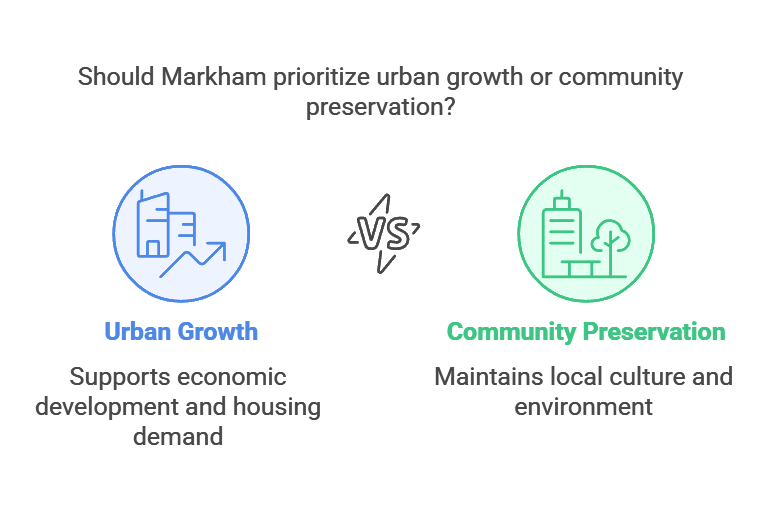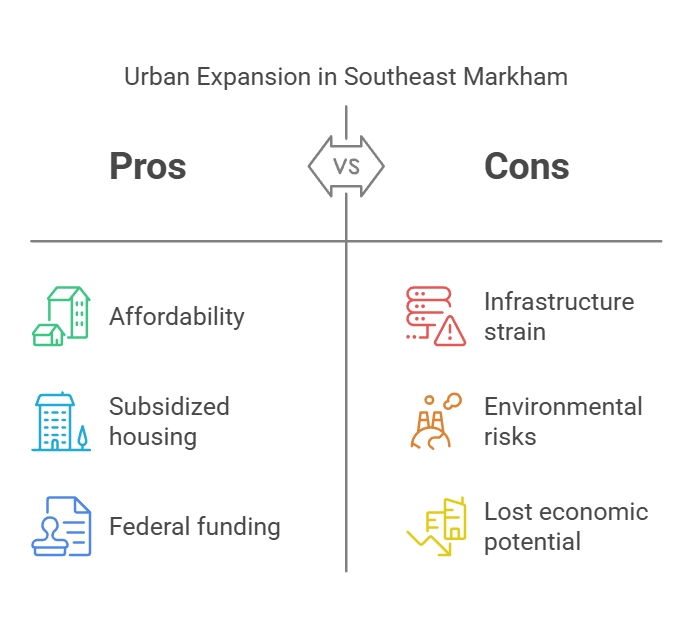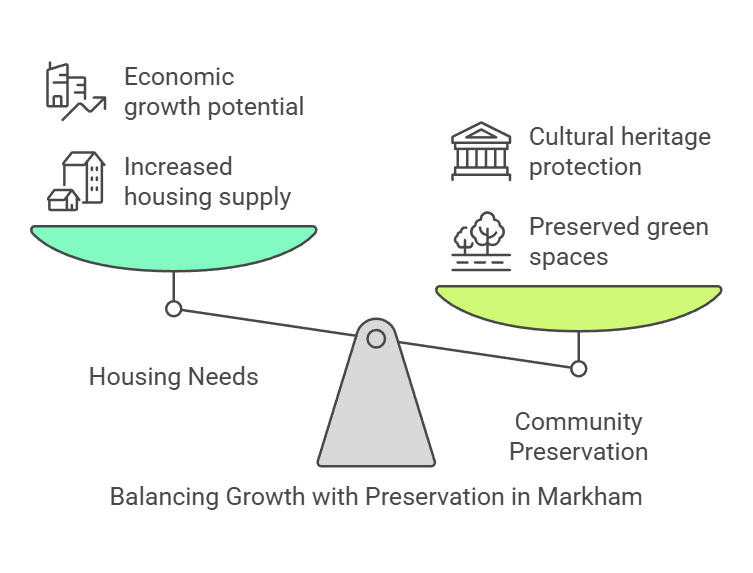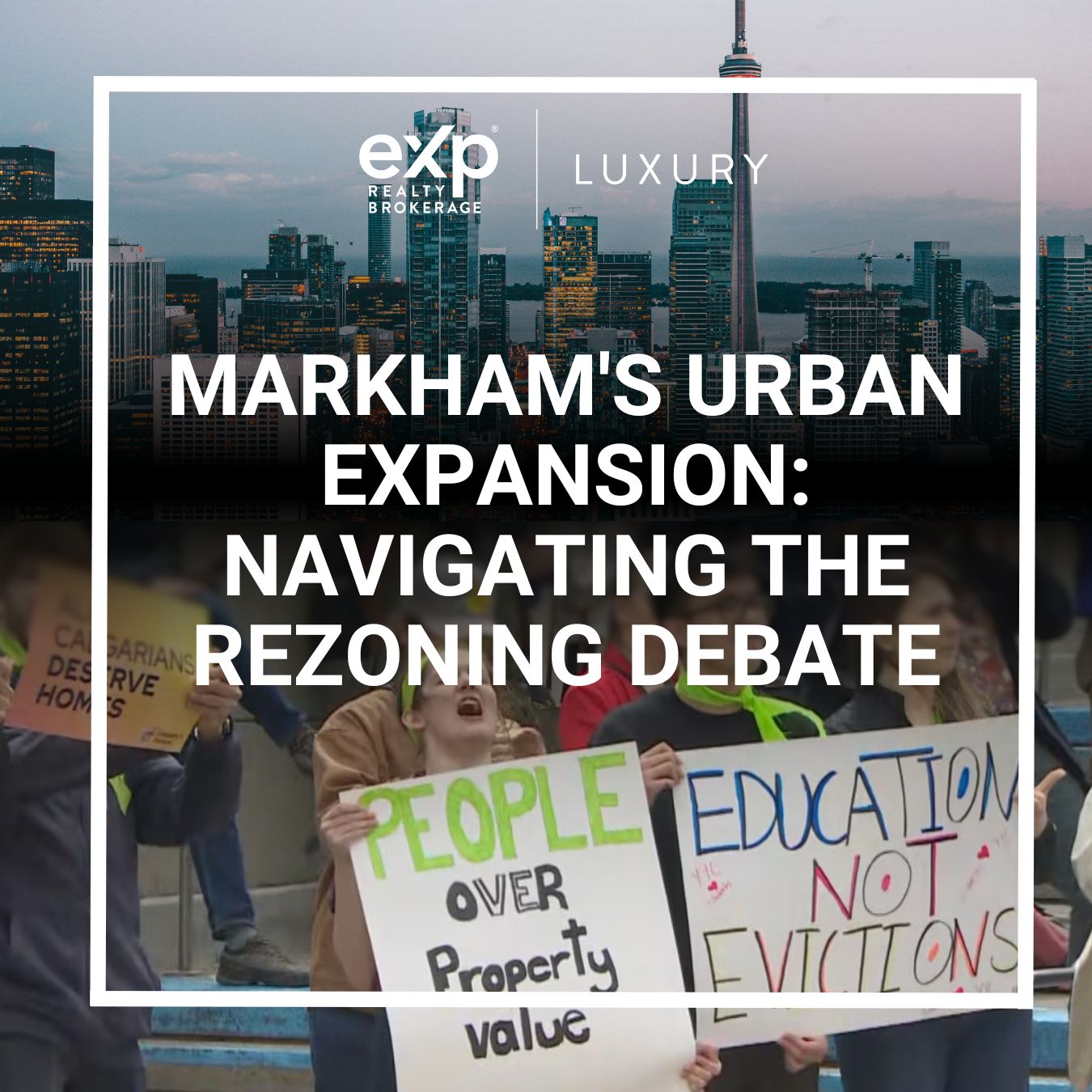Markham's Urban Expansion: Navigating the Rezoning Debate
Markham's Urban Expansion: Navigating the Rezoning Debate
Markham, Ontario, is a city caught between two futures: one shaped by rapid urban growth and another defined by community preservation. At the heart of this tension lies a contentious rezoning proposal to convert land designated for "service employment" into high-density residential towers. For residents, investors, and policymakers, this debate is a microcosm of broader challenges facing the Greater Toronto Area (GTA). Let’s unpack the complexities of this issue and what it means for Markham’s future.

The Catalyst: The Remington Group Proposal
The flashpoint for this debate is a plan by the Remington Group to build three rental towers (9–11 storeys) and 34 townhomes on an 8.19-acre vacant lot near Highway 407 and 14th Avenue. The development would add 785 rental units, with a mix of market-rate, below-market-rate, and rent-geared-to-income housing.
Key Details
-
Location: Southeast Markham, adjacent to a community park, retail plaza, and existing low-rise neighborhoods.
-
Affordability: 30% of units priced 10% below market rate; 40% of one tower reserved for subsidized housing.
-
Funding: Part of Markham’s bid for $58.8 million in federal Housing Accelerator Fund grants.

Mayor Frank Scarpitti supports the project, arguing it addresses Markham’s "attainable housing" shortage and aligns with the 2022 York Region Official Plan, which rezoned the area as mixed-use3. However, residents claim they were misled—sales agents initially promised retail spaces (e.g., clinics, shops) on the site, not high-rises.
Community Backlash: Voices of Concern
At a heated five-hour public meeting in February 2025, over 300 residents voiced opposition3. Their concerns fall into three categories:
1. Infrastructure Strain
-
Traffic Chaos: Residents argue the development would add 700–800 cars to already congested roads like 14th Avenue.
-
Parking Shortages: The proposal includes less than one parking space per unit, raising fears of spillover into nearby neighborhoods.
-
School Overcrowding: Parents worry the influx of students will overwhelm Ellen Fairclough Public School, despite the city’s claim it operates at 70% capacity3.
2. Environmental Risks
-
Flooding: Paved surfaces from the development could worsen stormwater runoff, citing last summer’s flooding near the site.
3. Lost Economic Potential
-
Residents and business leaders argue rezoning "service employment" land erodes job opportunities. The Toronto Region Board of Trade warns such conversions threaten GTA jobs3.
The Case For Development: Balancing Growth and Need
Proponents emphasize the urgency of Markham’s housing crisis and the benefits of densification:
Pros
-
Housing Relief: With average rents soaring, the project could provide affordable options for young professionals and families3.
-
Transit-Oriented Design: The site is near York Region’s VIVA BRT line, aligning with Markham’s goal to boost density near transit hubs3.
-
Economic Stimulus: Construction could create jobs and attract businesses to nearby retail plazas3.
Cons
-
Job Loss Risks: Converting employment land threatens Markham’s long-term economic diversity3.
-
Community Character: High-rises could disrupt the suburban feel of neighborhoods dominated by detached homes3.
Expert Insights: What This Means for Markham’s Real Estate
1. Property Values
Mixed-use developments often increase property values over time due to improved amenities and transit access. However, short-term uncertainty during construction could deter risk-averse buyers.
2. Investor Opportunities
-
Rental Demand: With 785 units, investors could capitalize on Markham’s rental market, which caters to tech workers and young families3.
-
Caution: Infrastructure delays or community pushback might slow ROI. Investors should monitor city council decisions (due by April 12, 2025)3.
3. Future Trends
Markham’s Markville Secondary Study Plan aims to repurpose 110 hectares for housing, signaling more rezoning battles ahead3. Projects like the Woodside Redevelopment show the city’s shift toward transit-oriented growth.
Conclusion: A Call for Dialogue
The Remington Group proposal is more than a local dispute—it’s a litmus test for sustainable urban development. How can Markham balance housing needs with community preservation? Share your thoughts in the comments:
-
Should employment lands be prioritized over housing?
-
How can cities mitigate infrastructure strain from densification?
For ongoing updates on Markham’s real estate evolution, subscribe to our newsletter and join the conversation. Together, we can shape a city that works for everyone.

Categories
- All Blogs (108)
- Activities (6)
- AI (1)
- Artificial Intelligence (1)
- Bank of Canada (3)
- Buying (54)
- Canada (69)
- Canada Economy (23)
- Condo (38)
- Debate (4)
- downsizing (23)
- Economy (21)
- empty nesters (2)
- Events (7)
- Family (25)
- Family Activities (9)
- fathers day (1)
- February (4)
- Festival (1)
- First Time Homebuyer (43)
- For lease (25)
- gift ideas (1)
- gst cut (1)
- High Demand (19)
- home (62)
- Home Improvement (49)
- Home Selling (66)
- Home Technologies (31)
- Home tips (61)
- Homebuying (63)
- House for sale (58)
- housing crisis (35)
- Inclusive Community (12)
- Job Opportunities (2)
- March (4)
- March Break (2)
- Markham (74)
- Markham, Ontario (68)
- PM Carney (2)
- policy (4)
- pricing (11)
- real estate (61)
- retirees (2)
- revenue (6)
- Rezoning (2)
- Rezoning Debate (2)
- Schools (8)
- Selling (39)
- Smart Home (26)
- Smart Houses (25)
- Snake Zodiac (1)
- spring (8)
- Springfest (1)
- summer (3)
- Tariff (3)
- Top-Ranked Schools (3)
- Toronto (59)
- Trump (1)
- Weekends (2)
- Winter (4)
- Winter Tips (4)
- Year of the Snake (1)
Recent Posts














